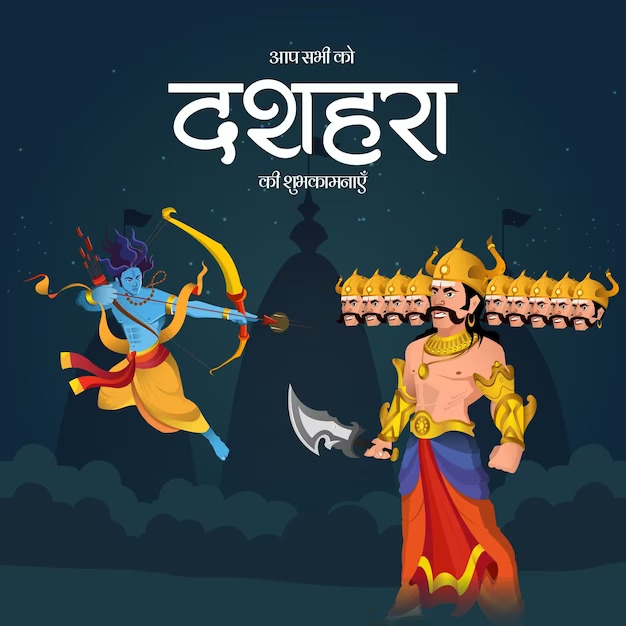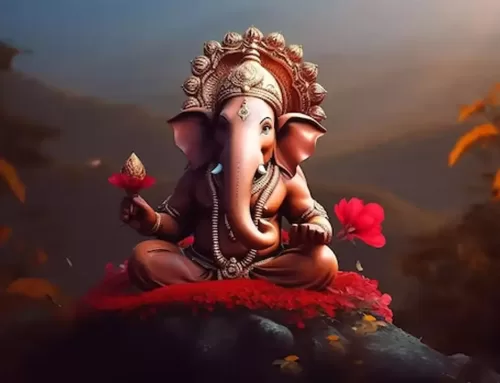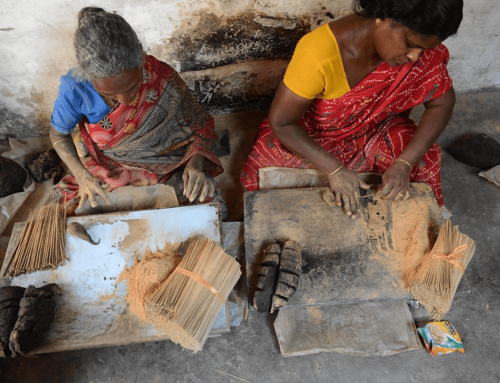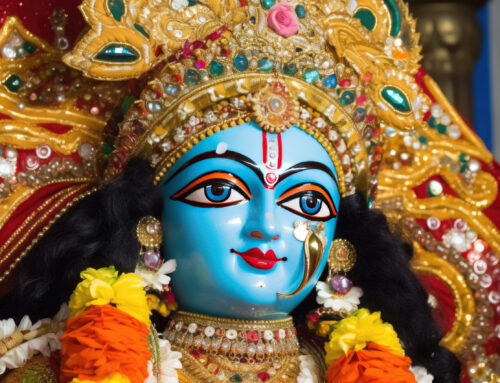Dussehra: The Triumph of Good Over Evil

Introduction
Dussehra, also known as Vijayadashami, is one of the most significant and widely celebrated Hindu festivals in India. It marks the culmination of the ten-day festival of Navratri and symbolizes the victory of good over evil. This article explores the history, significance, and the various traditions associated with Dussehra.
Historical Significance
Dussehra derives its roots from ancient Indian mythology and historical events. One of the most famous legends associated with Dussehra is the Ramayan. According to this epic, Lord Ram ji, accompanied by his loyal brother Lakshman and the Vanar (वन मैं रहने वाला मानव) Hanuman ji, waged a battle against the demon king Ravan. Ravan had abducted Ram’s wife, Sita, and held her captive in Lanka. After a fierce battle that lasted for ten days, Lord Ram ultimately vanquished Ravan and rescued Sita. Dussehra symbolizes the day on which Ram achieved this victory, marking the triumph of good over the forces of evil.
Another legend associated with Dussehra is the story of Goddess Durga’s battle against the buffalo demon, Mahishasur. It is believed that the goddess fought a fierce battle against Mahishasur for nine days and nights and ultimately defeated him on the tenth day, which is celebrated as Dussehra. This victory of the goddess signifies the power of divine femininity and the defeat of evil forces.
Celebrations and Traditions
- Ramlila: One of the most popular traditions associated with Dussehra is the enactment of the Ramayan, known as “Ramlila.” This dramatic retelling of Lord Ram’s life and his battle with Ravan is performed in various parts of India, with elaborate sets and costumes.
- Effigy Burning: In many parts of India, effigies of Ravan, his brother Kumbhakarn, and his son Meghnath are burnt in grand processions. This symbolic act represents the victory of good over evil and is witnessed by thousands of people.
- Worship of Goddess Durga: In some regions, Dussehra coincides with the conclusion of Navratri, a nine-night festival dedicated to Goddess Durga. The festival culminates with the immersion of Durga idols in rivers and lakes.
- Apt Pooja: In many households, Dussehra is marked by the worship of tools, instruments, and machinery. This tradition, known as “Apt Pooja” or “Shastra Puja,” is believed to invoke the blessings of the divine for success in one’s profession or trade.
- Distribution of Sweets: Sweets and gifts are exchanged among friends and family during Dussehra as a gesture of love and goodwill.
Significance Today
Dussehra holds immense cultural and spiritual significance in modern India. Beyond its religious connotations, it serves as a reminder of the eternal struggle between righteousness and evil, making it a universally relatable festival. The burning of Ravan effigies is often seen as a symbolic way to rid oneself of inner demons and vices.
Conclusion
Dussehra, celebrated with great fervor and enthusiasm across India, is a festival that transcends religious boundaries. It reminds us that, no matter the challenges we face, goodness and righteousness will ultimately prevail. As families come together, effigies burn, and communities celebrate, Dussehra continues to be a vibrant and enduring symbol of hope, victory, and the triumph of light over darkness.







